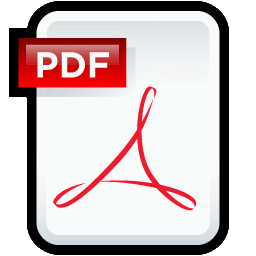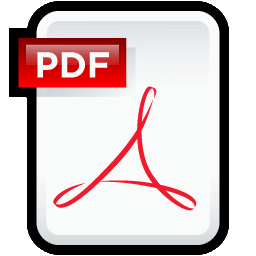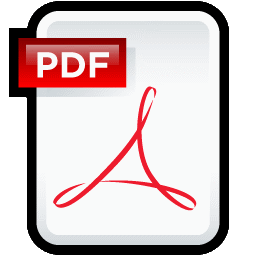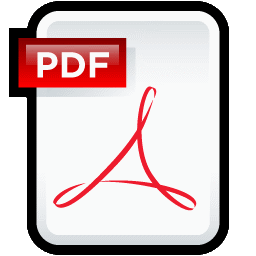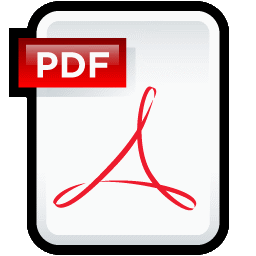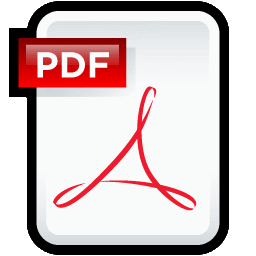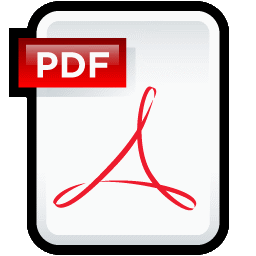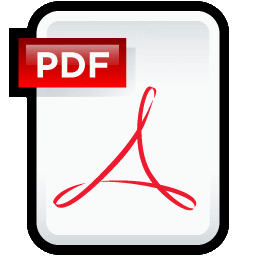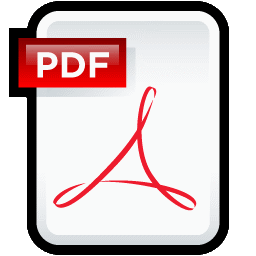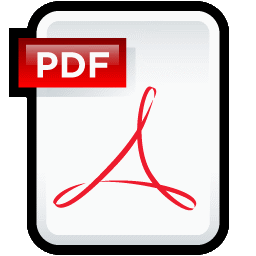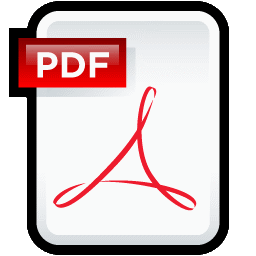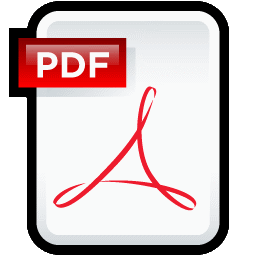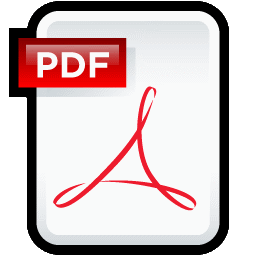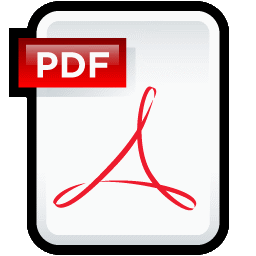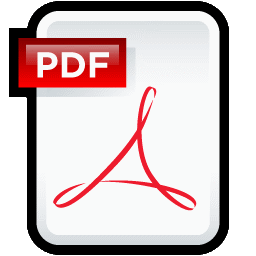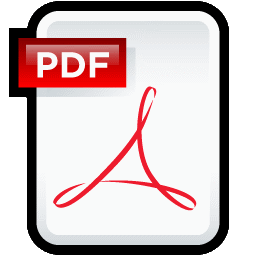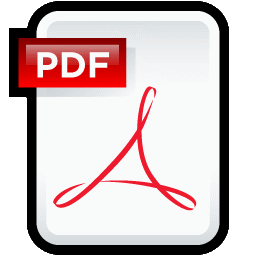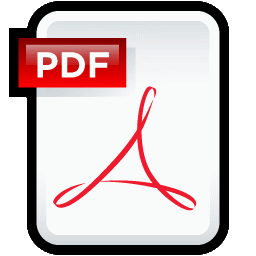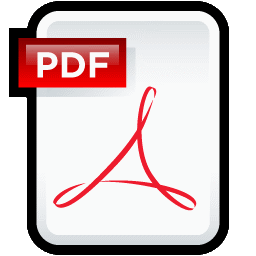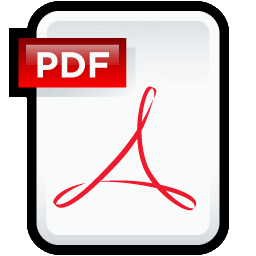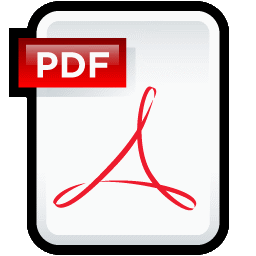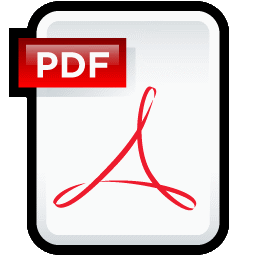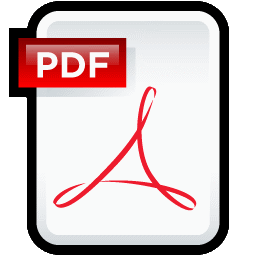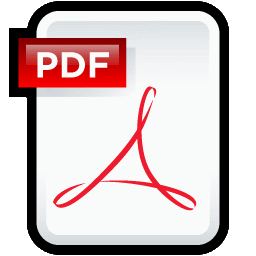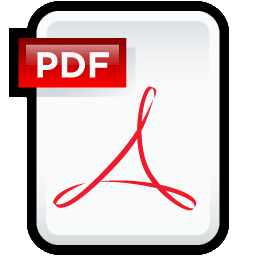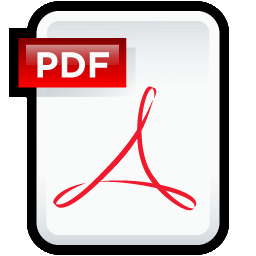FDA Blood Guidances
73 files
-
Adequate and Appropriate Donor Screening Tests for Hepatitis B; Hepatitis B Surface Antigen (HBsAg) Assays Used to Test Donors of Whole Blood and Blood Components, Including Source Plasma and Source Leukocytes
By Cliff
Docket Number: 2002D-0081 Issued by: Center for Biologics Evaluation and Research Blood establishments are required under 21 CFR 610.40(a)(3) and (b) to test donations of human blood and blood components for hepatitis B virus using approved screening tests that are adequate and appropriate for this purpose. One test used to detect the presence of hepatitis B infection is the hepatitis B surface antigen (HBsAg) test.
0 downloads
(0 reviews)0 comments
Submitted
-
An Acceptable Circular of Information for the Use of Human Blood and Blood Components
By Cliff
Docket Number: FDA-2002-D-0223 Issued by: Center for Biologics Evaluation and Research We, the Food and Drug Administration (FDA), Center for Biologics Evaluation and Research, are recognizing as acceptable for use by you, manufacturers of blood and blood components intended for transfusion, the document entitled “Circular of Information for the Use of Human Blood and Blood Components,” dated December 2021 (December 2021 Circular). The December 2021 Circular provides specific labeling instructions for the administration and use of blood and blood components intended for transfusion. We believe that the December 2021 Circular will assist you in complying with labeling requirements under 21 CFR 606.122. The requirements under 21 CFR 606.122 specify that a circular of information must be available for distribution with blood and blood components intended for transfusion. Section 606.122 further specifies the information that is required in the circular of information. This guidance supersedes the guidance of the same title updated December 2017
0 downloads
(0 reviews)0 comments
Submitted
-
Alternative Procedures for the Manufacture of Cold-Stored Platelets Intended for the Treatment of Active Bleeding when Conventional Platelets Are Not Available or Their Use Is Not Practical
By Cliff
Docket Number: FDA-2023-D-2034 Issued by: Center for Biologics Evaluation and Research FDA (we) is issuing this guidance to provide a notice of exceptions and alternatives to certain requirements in Title 21 of the Code of Federal Regulations (CFR) regarding blood and blood components. This notice is being issued under 21 CFR 640.120(b) to respond to a public health need and address the urgent and immediate need for platelets for the treatment of active bleeding when conventional platelets are not available, or their use is not practical. Maintaining platelet availability in the face of logistical challenges (e.g., in military, prehospital, or austere settings) or other threats to blood availability (e.g., mass casualty events or public health emergencies) is critical to assure that platelets are available to patients with active bleeding.
0 downloads
(0 reviews)0 comments
Submitted
-
Manufacture of Blood Components Using a Pathogen Reduction Device in Blood Establishments: Questions and Answers
By Cliff
Docket Number: FDA-2017-D-6784 Issued by: Center for Biologics Evaluation and Research We, FDA, are providing you, blood establishments that collect or process blood and blood components, with recommendations for implementing a pathogen reduction device for the manufacture of pathogen-reduced blood components. We have received specific questions from blood establishments who have chosen to use the INTERCEPT® Blood System for Platelets and Plasma and who have questions on implementation of this pathogen reduction device. As a result, we are providing guidance in a question and answer format, addressing the most frequently asked questions.
0 downloads
(0 reviews)0 comments
Submitted
-
Notifying FDA of Fatalities Related to Blood Collection or Transfusion
By Cliff
Docket Number: 2002D-0124 Issued by: Center for Biologics Evaluation and Research This document’s goal is to help you, a blood collection or transfusion facility, report fatalities related to blood and blood component (blood) collection or transfusion to us, the Food and Drug Administration (FDA), Center for Biologics Evaluation and Research (CBER). This guidance updates the guidance of the same title dated September 2003.
The contents of this document do not have the force and effect of law and are not meant to bind the public in any way, unless specifically incorporated into a contract. This document is intended only to provide clarity to the public regarding existing requirements under the law. FDA guidance documents, including this guidance, should be viewed only as recommendations, unless specific regulatory or statutory requirements are cited. The use of the word should in FDA guidances means that something is suggested or recommended, but not required.
1 download
(0 reviews)0 comments
Submitted
-
Implementation of Acceptable Full-Length and Abbreviated Donor History Questionnaires and Accompanying Materials for Use in Screening Donors of Blood and Blood Components
By Cliff
Docket Number: FDA-2016-D-1342 Issued by: Center for Biologics Evaluation and Research This guidance recognizes, as acceptable, the standardized full-length and abbreviated donor history questionnaires and accompanying materials, version 4.0 dated May 2023, prepared by the AABB Donor History Task Force . This guidance also provides recommendations to licensed establishments on how to report implementation of the acceptable AABB donor history questionnaires and accompanying materials (DHQ documents) under Title 21 of the Code of Federal Regulations 601.12 (21 CFR 601.12).
0 downloads
(0 reviews)0 comments
Submitted
-
For the Submission of Chemistry, Manufacturing and Controls and Establishment Description Information for Human Plasma-Derived Biological Products, Animal Plasma or Serum-Derived Products
By Cliff
Docket Number: 98D-0007 Issued by: Center for Biologics Evaluation and Research In the Federal Register of July 8, 1997 (62 FR 36558), the Food and Drug Administration (FDA) announced the availability of the revised Form FDA 356h, Biologics License Application (BLA) entitled "Application to Market a New Drug, Biologic, or an Antibiotic for Human Use." This document provides guidance on the content and format of the Chemistry, Manufacturing and Controls (CMC) section and the Establishment
Description section of a Biologics License Application for a Human Plasma-Derived Biological Product, Animal Plasma or Serum-Derived Product. For these products, FDA is now implementing the BLA (revised Form FDA 356h) and will accept that application, instead of two separate license application submissions, the product license application (PLA) and the establishment license application (ELA).
0 downloads
(0 reviews)0 comments
Submitted
-
Additional Recommendations for Donor Screening With a Licensed Test for HIV-1 Antigen
By Cliff
Docket Number: FDA-2022-D-0499 Issued by: Center for Biologics Evaluation and Research On August 8, 1995, FDA issued a memorandum to all registered blood and plasma establishments entitled, "Recommendations for Donor Screening with a Licensed Test for HIV-1 Antigen". This memorandum supplements that memorandum and provides additional recommendations regarding storage of samples for HIV-1 antigen testing as well as clarifications of the previous recommendations regarding specific implementation issues.
0 downloads
(0 reviews)0 comments
Submitted
-
Labeling of Red Blood Cell Units with Historical Antigen Typing Results
By Cliff
Docket Number: FDA-2016-D-4308 Issued by: Center for Biologics Evaluation and Research We, FDA, are issuing this guidance document to provide you, establishments that collect blood and blood components for transfusion, with recommendations for labeling Red Blood Cell (RBC) units with non-ABO/Rh(D) antigen typing results obtained from previous donations (historical antigen typing results). This guidance provides recommendations to transfusion services for managing RBC units labeled with historical antigen typing results. This guidance also provides licensed blood collection establishments that choose to implement labeling of RBC units with historical antigen typing results instructions regarding how to report the manufacturing and labeling changes under 21 CFR 601.12. This guidance does not apply to test results for ABO and Rh(D) antigens. For ABO and Rh(D) antigens, you must follow FDA requirements in 21 CFR 640.5(b) and (c), and 606.121(c)(9) and (13), as well as all other applicable requirements.
1 download
(0 reviews)0 comments
Submitted
-
Streamlining the Donor Interview Process: Recommendations for Self-Administered Questionnaires
By Cliff
Docket Number: 2002D-0080 Issued by: Center for Biologics Evaluation and Research Blood and plasma establishments (hereafter referred to as “blood establishments”) that collect blood and blood components intended for transfusion or for further manufacture may present donor screening questions to the donor by several methods. The blood establishment should choose the method that works best within its donor screening procedures. This guidance is intended for those blood establishments that wish to implement self-administered donor questionnaires, which allow donors to answer the pre-donation questions on their own; however, you (the blood establishment) may elect to continue to administer the donor questions by direct oral questioning. The guidance provides the recommendations of the Food and Drug Administration (FDA) for implementing self-administered donor questionnaires. In addition, the guidance describes the information the licensed blood establishments should include in a biologics license application supplement or annual report when they intend to implement self-administered questionnaires. This guidance finalizes the draft guidance of the same title dated April 2002. It also supersedes Section I.A of FDA’s memorandum dated April 23, 1992, entitled “Revised Recommendations for the Prevention of Human Immunodeficiency Virus (HIV) Transmission by Blood and Blood Products.”
0 downloads
(0 reviews)0 comments
Submitted
-
Implementation of Acceptable Full-Length and Abbreviated Donor History Questionnaires and Accompanying Materials for Use in Screening Donors of Source Plasma
By Cliff
Docket Number: FDA-2016-D-1342 Issued by: Center for Biologics Evaluation and Research This guidance recognizes, as acceptable, the standardized full-length and abbreviated donor history questionnaires and accompanying materials, version 3.0 dated June 2023, prepared by the Plasma Protein Therapeutics Association (PPTA). This guidance also advises Source Plasma manufacturers on how to report implementation of the acceptable PPTA Source Plasma donor history questionnaires and accompanying materials (SPDHQ documents) under Title 21 of the Code of Federal Regulations 601.12 (21 CFR 601.12).
The SPDHQ documents provide establishments that collect Source Plasma with a specific process for administering questions to donors to determine their eligibility to donate. Acceptable SPDHQ documents are those documents that FDA has determined provide Source Plasma collection establishments with one means of obtaining donor history information to determine if a donor is eligible, consistent with FDA requirements and recommendations. The SPDHQ documents have been updated to align with FDA’s current requirements and recommendations for donor eligibility.
This guidance supersedes the document entitled “Implementation of an Acceptable Full-Length and Abbreviated Donor History Questionnaires and Accompanying Materials for Use in Screening Donors of Source Plasma” dated May 2020.
1 download
(0 reviews)0 comments
Submitted
-
Testing for Biotin Interference in In Vitro Diagnostic Devices
By Cliff
Docket Number: FDA-2019-D-1876 Issued by: Center for Biologics Evaluation and Research Center for Devices and Radiological Health The Food the Drug Administration (FDA or we) is providing recommendations on the testing for interference by biotin on the performance of in vitro diagnostic devices (IVDs). This guidance is intended to help device developers and clinicians understand how FDA recommends biotin interference testing be performed, and how the results of the testing should be communicated to end-users, including clinical laboratories and clinicians. The recommendations apply to IVDs, including devices that are licensed under section 351 of the Public Health Service Act (42 U.S.C. 262) and used in donor screening, that use biotin technology. This guidance finalizes the draft guidance of the same title dated June 2019.
0 downloads
(0 reviews)0 comments
Submitted
-
Safety, Efficacy, and Pharmacokinetic Studies to Support Marketing of Immune Globulin Intravenous (Human) as Replacement Therapy for Primary Humoral Immunodeficiency
By Cliff
Docket Number: 2005D-0438 Issued by: Center for Biologics Evaluation and Research We, FDA, are providing you, Investigational New Drug Application (IND) sponsors and Biologics License Application (BLA) applicants, recommendations for testing the safety and efficacy of Immune Globulin Intravenous (Human) (IGIV) products as replacement therapy in primary humoral immunodeficiency. The document provides guidance on general principles concerning clinical trial design to evaluate safety, efficacy, and pharmacokinetics of investigational IGIV products and is intended to assist you in the preparation of the clinical/biostatistical and human pharmacokinetic sections of a BLA. This guidance does not address evidence of clinical efficacy for other indications, or other sections of a BLA such as chemistry, manufacturing, and controls and preclinical toxicology.
0 downloads
(0 reviews)0 comments
Submitted
-
Recommendations to Reduce the Possible Risk of Transmission of Creutzfeldt-Jakob Disease and Variant Creutzfeldt-Jakob Disease by Blood and Blood Components
By Cliff
Docket Number: FDA-2012-D-0307 Issued by: Center for Biologics Evaluation and Research We, FDA, are issuing this guidance document to provide you, blood establishments that collect blood and blood components, with recommendations intended to reduce the possible risk of transmission of Creutzfeldt-Jakob disease (CJD) and variant Creutzfeldt-Jakob disease (vCJD) by blood and blood components. The recommendations in this guidance apply to the collection of Whole Blood and blood components intended for transfusion or for use in further manufacturing, including Source Plasma.
This guidance supersedes the guidance of the same title dated April 2020 and updated August 2020 (2020 guidance). We removed the recommendations to defer indefinitely blood donors for: 1) geographic risk of possible exposure to bovine spongiform encephalopathy for time spent in the United Kingdom (U.K.) from 1980-1996 and for time spent in France and Ireland from 1980-2001, and 2) receipt of a blood transfusion in the U.K., France, and Ireland from 1980-present. We also provide recommendations for requalification of individuals previously deferred for these geographic risk factors, provided they meet all other eligibility requirements.
3 downloads
(0 reviews)0 comments
Submitted
-
Recommendations to Reduce the Risk of Transfusion-Transmitted Malaria
By Cliff
Docket Number: FDA-2000-D-0187 Issued by: Center for Biologics Evaluation and Research This guidance document provides you, blood establishments that collect blood and blood components, with FDA’s recommendations to reduce the risk of transfusion-transmitted malaria (TTM). The recommendations contained in this guidance apply to the collection of Whole Blood and blood components, except Source Plasma. Blood establishments are not required to assess Source Plasma donors for malaria risk (21 CFR 630.15(b)(8)). This guidance supersedes the guidance titled “Revised Recommendations to Replace the Risk of Transfusion-Transmitted Malaria; Guidance for Industry” dated April 2020 (April 2020 guidance).
To address the urgent and immediate need for blood and blood components during the Coronavirus Disease 2019 (COVID-19) public health emergency, in April 2020 FDA (we) issued revised recommendations to reduce the risk of TTM during the public health emergency. The recommendations in the April 2020 guidance were based on the Agency’s evaluation of the available scientific and epidemiological data on malaria risk, and data on FDA-approved pathogen reduction devices. As stated in the April 2020 guidance, FDA expected implementation of the revised recommendations would not be associated with any adverse effect on the safety of the blood supply and that early implementation of the recommendations may help to address significant blood shortages that occurred as a result of the COVID-19 public health emergency. Further, the guidance explained that we expected that the recommendations set forth in the revised guidance would continue to apply outside the context of the COVID-19 public health emergency, and that FDA would replace the April 2020 guidance with an updated guidance that incorporates any appropriate changes based on public comments and our experience with implementation.
1 download
(0 reviews)0 comments
Submitted
-
Investigational COVID-19 Convalescent Plasma
By Cliff
Docket Number: FDA-2020-D-1825 Issued by: Center for Biologics Evaluation and Research FDA plays a critical role in protecting the United States (U.S.) from threats such as emerging infectious diseases, including the Coronavirus Disease 2019 (COVID-19) pandemic. FDA is committed to providing timely guidance to support response efforts to emerging threats.
On August 23, 2020, FDA issued an Emergency Use Authorization (EUA) for COVID-19 convalescent plasma for the treatment of hospitalized patients with COVID-19. FDA subsequently reissued this EUA with revisions. Most recently, FDA revised the EUA to limit authorization to the use of COVID-19 convalescent plasma with high titers of anti-SARS-CoV-2 antibodies for the treatment of COVID-19 in patients with immunosuppressive disease or receiving immunosuppressive treatment in either the outpatient or inpatient setting. FDA recognizes that while COVID-19 convalescent plasma may be used under an EUA consistent with the authorization, COVID-19 convalescent plasma may also be used under an investigational new drug application (IND). For the purposes of this guidance, the term “COVID-19 convalescent plasma” refers to the convalescent plasma authorized under the EUA, while the term “investigational convalescent plasma” refers to convalescent plasma that does not meet all the conditions of the EUA and/or is being used under an IND.
FDA is issuing this guidance to provide recommendations to health care providers and investigators on the use of COVID-19 convalescent plasma or investigational convalescent plasma. The guidance also provides recommendations to blood establishments on collection. This document supersedes the guidance of the same title issued in January 2022 (previous versions February 2021, January 2021, November 2020, September 2020, May 2020, and April 2020). The recommendations in this guidance are unchanged from the January 2022 guidance. However, we have removed the language limiting the duration of the policy in the guidance to the public health emergency related to COVID-19 declared by HHS in accordance with section 319(a)(2) of the Public Health Service Act (PHS Act) (42 U.S.C. 247d(a)(2)), which expired on May 11, 2023.
2 downloads
(0 reviews)0 comments
Submitted
-
Information for Blood Establishments Regarding FDA’s Determination that Zika Virus is no Longer a Relevant Transfusion-Transmitted Infection
By Cliff
Information for Blood Establishments Regarding FDA’s Determination that Zika Virus is no Longer a Relevant Transfusion-Transmitted Infection
Withdrawal of Guidance titled “Revised Recommendations for Reducing the Risk of Zika Virus Transmission by Blood and Blood Components”
FDA requires blood establishments to test blood donations for new or emerging infectious agents that may affect blood product safety if certain conditions outlined in FDA regulations are met. Specifically, if a transfusion-transmitted infection “may have sufficient incidence and/or prevalence to affect the potential donor population” and meets certain other criteria described in FDA’s regulations, then FDA may determine the transfusion-transmitted infection is a “relevant transfusion-transmitted infection” (RTTI). Testing for an RTTI is required under FDA’s regulations if FDA-licensed, approved, or cleared screening tests are available and testing is necessary to reduce adequately and appropriately the risk of transmission.
FDA has determined Zika virus (ZIKV) is no longer an RTTI under FDA’s regulations because, as discussed further below, the available evidence demonstrates that ZIKV no longer has sufficient incidence and/or prevalence to affect the potential donor population. Accordingly, FDA withdrew the guidance titled, “Revised Recommendations for Reducing the Risk of Zika Virus Transmission by Blood and Blood Components,” dated July 2018. Because ZIKV is no longer an RTTI, blood establishments may discontinue testing for ZIKV. Licensed blood establishments that discontinue testing blood donations for ZIKV must report this change to FDA in the annual report under 21 CFR 601.12(d), noting the date testing was discontinued. Corresponding changes to the circular of information must also be reported in the annual report under 21 CFR 601.12(d)
0 downloads
(0 reviews)0 comments
Submitted
-
Plasma Derived from Therapeutic Plasma Exchange
By Cliff
Docket Number: FDA-2013-S-0613 Issued by: Center for Biologics Evaluation and Research In an April 1, 1983, Notice published in the Federal Register (Vol. 48, No. 64, page 14048), the Food and Drug Administration (FDA) advised that plasma derived from therapeutic exchange procedures is a biological product subject to the licensing provisions of the Public Health Service Act [42 USC 262 (a)] then collected and shipped for further manufacture into in vitro diagnostic products.
2 downloads
(0 reviews)0 comments
Submitted
-
Recommendations for the Management of Donor and Units that are Initially Reactive for Hepatitis B Surface Antigen (HBsAg)
By Cliff
Docket Number: FDA-2013-S-0613 Issued by: Center for Biologics Evaluation and Research These recommendations set forth a series of procedures by which an initially HBsAg reactive donor may be reevaluated by a blood establishment, providing that all other donor suitability requirements are met. The decision of whether an initially reactive donor is to be reevaluated is left to the blood establishment.
Furthermore, a blood establishment may adopt more stringent procedures, provided they are. consistent with these recommendations. At each step in this procedure, the predominance of each test and the interpretation of results should be as specified, in the package insert for that kit.
0 downloads
(0 reviews)0 comments
Submitted
-
Requalification Method for Reentry of Donors Who Test Hepatitis B Surface Antigen (HBsAg) Positive Following a Recent Vaccination against Hepatitis B Virus Infection
By Cliff
Docket Number: FDA-2008-D-0263 Issued by: Center for Biologics Evaluation and Research This guidance document is intended for blood establishments that manufacture Whole Blood and blood components for transfusion or for further manufacture, including Source Plasma and Source Leucocytes. This guidance provides recommendations for a requalification method or process for the reentry of deferred donors who test repeatedly reactive for hepatitis B surface antigen (HBsAg), confirmed positive by neutralization, following a recent vaccination against hepatitis B virus (HBV) infection, and who are not infected by HBV.
0 downloads
(0 reviews)0 comments
Submitted
-
Use of Serological Tests to Reduce the Risk of Transmission of Trypanosoma cruzi Infection in Blood and Blood Components
By Cliff
Docket Number: FDA-2009-D-0137 Issued by: Center for Biologics Evaluation and Research We, FDA, are providing you, blood collection establishments, with recommendations regarding the use of serological tests to reduce the risk of transmission of Trypanosoma cruzi (T. cruzi) infection in blood and blood components. These recommendations apply to the collection of blood and blood components, except Source Plasma, for transfusion or for use in manufacturing a product, including donations intended as a component of, or used to manufacture, a medical device.
0 downloads
(0 reviews)0 comments
Submitted
-
Use of Sterile Connecting Devices in Blood Bank Practices
By Cliff
Docket Number: FDA-2022-D-0486 Issued by: Center for Biologics Evaluation and Research Sterile connecting devices produce sterile welds between two pieces of compatible tubing. This procedure permits sterile connection of a variety of containers and tube diameters. This guidance describes recommended practices and procedures for use of these devices. This guidance does not address the data or information that a manufacturer of a sterile connecting device must submit to FDA in order to obtain approval or clearance for marketing. It is also important to note that the use of an approved or cleared sterile connecting device for purposes not authorized in the labeling may cause the device to be considered adulterated and misbranded under the Federal Food, Drug and Cosmetic Act.
2 downloads
(0 reviews)0 comments
Submitted
-
Recommendations for Blood Establishments: Training of Back-Up Personnel, Assessment of Blood Donor Suitability and Reporting Certain Changes to an Approved Application
By Cliff
Docket Number: FDA-2009-D-0533 Issued by: Center for Biologics Evaluation and Research In November 2009, we, FDA, issued a draft guidance entitled "Recommendations for the Assessment of Blood Donor Suitability, Blood Product Safety, and Preservation of the Blood Supply in Response to Pandemic (H1N1) 2009 Virus", dated November 2009 (Pandemic (H1N1) 2009 Virus Draft Guidance) (November 19, 2009, 74 FR 59982). This guidance finalizes that draft guidance. Note that while the recommendations that FDA is finalizing were proposed in the Pandemic (H1N1) 2009 Virus Draft Guidance, the finalized recommendations are applicable regardless of the existence of a pandemic or other emergency situation.
0 downloads
(0 reviews)0 comments
Submitted
-
Further Testing of Donations that are Reactive on a Licensed Donor Screening Test for Antibodies to Hepatitis C Virus
By Cliff
Docket Number: FDA-2018-D-3197 Issued by: Center for Biologics Evaluation and Research We, the Food and Drug Administration (FDA), are providing you, blood establishments that collect Whole Blood and blood components, including Source Plasma, with recommendations for further testing of donations that are reactive on a licensed donor screening test for antibodies to hepatitis C virus (anti-HCV), as required under 21 CFR 610.40(e). We are also providing guidance to blood establishments on how to report the implementation of these recommendations.
0 downloads
(0 reviews)0 comments
Submitted
-
Recommendations for Reducing the Risk of Transfusion-Transmitted Babesiosis
By Cliff
Docket Number: FDA-2018-D-2478 Issued by: Center for Biologics Evaluation and Research We, the Food and Drug Administration (FDA), are notifying you, blood establishments that collect blood and blood components, that we have determined babesiosis to be a relevant transfusion-transmitted infection (RTTI) under 21 CFR 630.3(h)(2).1 Accordingly, we are providing recommendations for donor screening, donation testing, donor deferral and product management to reduce the risk of transfusion-transmitted babesiosis (TTB). The recommendations contained in this guidance apply to the collection of blood and blood components, except Source Plasma.2
This guidance finalizes the draft guidance of the same title dated July 2018.
0 downloads
(0 reviews)0 comments
Submitted
